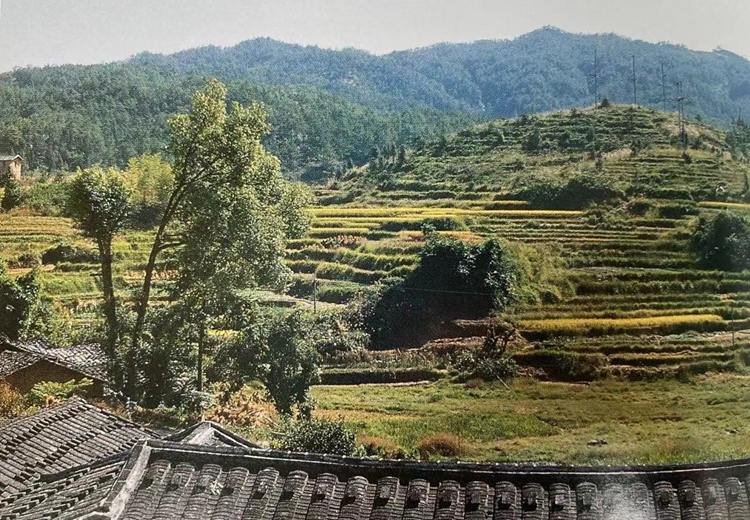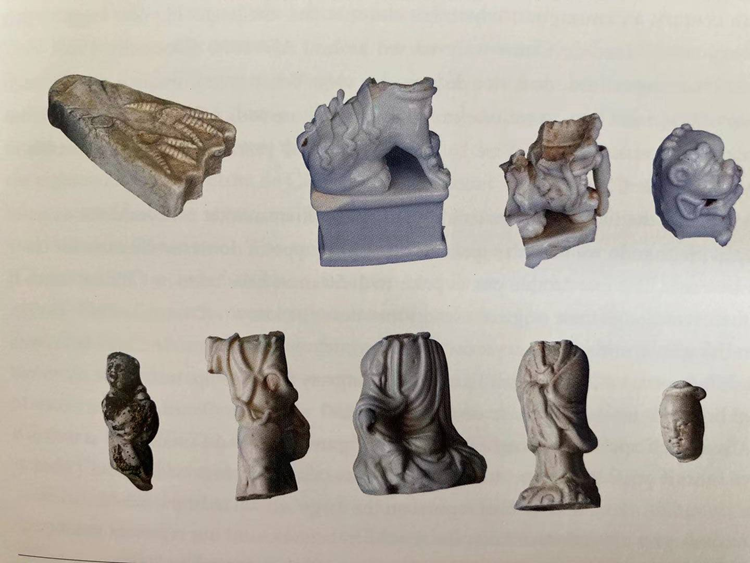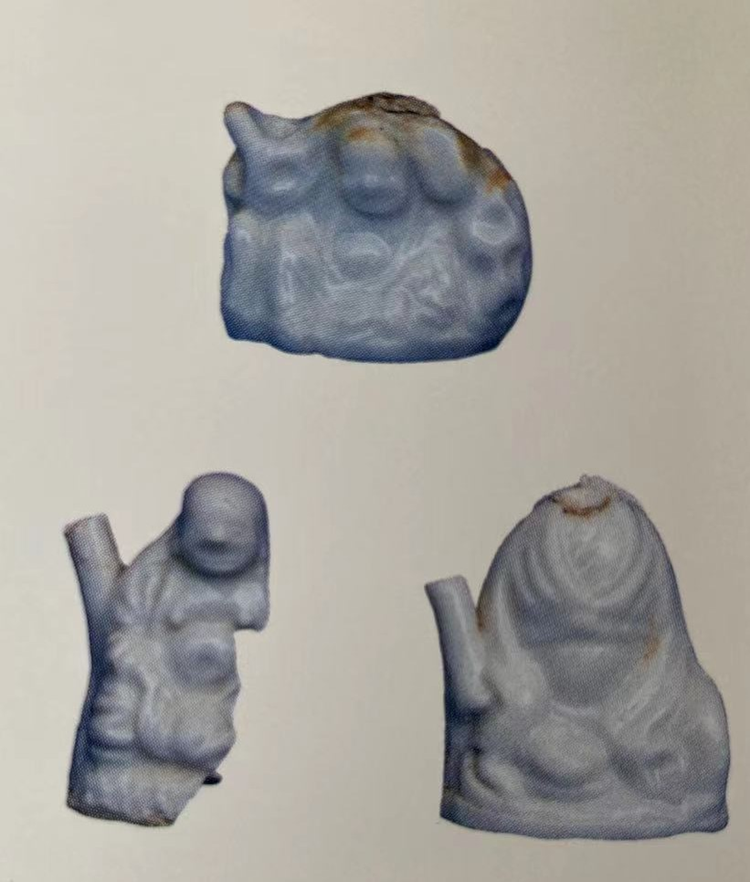来源: 发布时间:2021-08-25 10:49:00
外国人眼中的“中国白”|考古眼光中的“中国白”(二)——何翠媚
编者按:
由柯玫瑰(Rose Kerr)、约翰•盖尔(John Ayers)所著《中国白——德化白瓷》(Blanc de Chine—porcelain from Dehua)于2002年经新加坡亚洲文明博物馆出版,是继唐纳利《中国白——福建德化瓷》之后的一本专门研究德化白瓷的专著,影响甚为深远。
该书收录的都为国外研究德化白瓷的知名学者所撰写德化白瓷研究资料。包括柯玫瑰的“德化器物款识介绍”,海蒂(Heidi Tan)的“鉴赏家探访”,约翰•盖尔的“中国白的影响”,何翠媚(Chuimei Ho)的“考古眼光中的中国白”,郭勒逊(Kenson Kwok)的“德化雕塑结构的一点看法”,埃娃•施特勒伯(Eva Strober)的“德累斯顿的斯特朗大帝收藏的德化瓷”,以及附录介绍等七个部分,从不同角度介绍了德化白瓷。与此同时,该书收录的160件德化窑精品,为Hickley家藏,后捐赠给新加坡亚洲文明博物馆,是了解、品鉴、研究德化白瓷不可多得的艺术精品。
本栏目将定期精选出相关代表性文章进行翻译,以飨读者。然而,由于作者水平的局限,翻译过程中难免有所错漏,不足之处敬请各位读者提出宝贵意见。
Blanc de Chine in archaeological perspective: a tribute to Donnelly by Chuimei Ho
考古眼光中的“中国白”(二)——何翠媚
(翻译: 孙延燕)
Production: Workshops of Blanc-de-chine Ware
based on survey reports, Donnelly discussed the importance of Dehua as the centre of production for blanc de Chine ware since the sixteenth century. In Dehua itself the earliest datable evidence came from a burial which contained a tablet inscribed with the date 1519 in cobalt blue. Two other early tombs have been dated to 1559 and1644 respectively. It is significant to note that blanc de Chine pieces were present in all these three tombs. The 1644 tomb had more blanc de Chine pieces than the earlier two tombs, including one bronze-shaped censer, one lion, and one human figurine. Interestingly, the designs of vases and candlesticks of these three tombs are strikingly similar, even though they are more than a century apart.
生产:中国白瓷器的作坊
根据调查报告,唐纳利讨论了自十六世纪以来德化作为中国白瓷器生产中心的重要性。德化本身最早的资料证明来自一个墓葬,在它里面发现了一块刻有1519年钴蓝色日期的墓碑。另外两座早期墓葬分别追溯到1559年和1644年。值得注意的是,这三座墓葬中都有“中国白”瓷器。1644年的墓葬比前两座墓葬有更多的中国白标本,包括一个青铜器型的香炉、一头狮子和一个人像。有趣的是,这三座墓葬的花瓶和烛台的设计惊人相似,尽管它们相隔一个多世纪。
In terms of our understanding of blanc de Chine production sites, not much has been advanced since Donnelly's time as no ancient blanc de Chine kiln has ever been excavated. It is unfortunate that most of the kilns in question were urban kilns-they were located within Dehua township, where archaeological sites have little chance of survival intact. Fortunately, Xu Benzhang, a dedicated local scholar who single-handedly operated the Dehua Cultural Office and later the Dehua Museum, "thoroughly surveyed the area in the 1960s and 1970s Had Xu's records not existed, the general distribution of sixteenth-to seventeenth-century blanc de Chine kilns would have remained very unclear.
就我们对中国白的生产地点的了解而言,因没有发现更多古代中国白瓷窑址,因此,自唐纳利时代以来没有更多进展。同样不幸的是,大多数窑址位于德化城关,考古遗址保存完好的可能性很小。幸运的是,徐本章,作为一位在德化文化部门工作,后建立了德化陶瓷博物馆的全心全意付出的地方学者,在上世纪60、70年代,对这一地区进行了彻底的调查。如果没有徐本章的记录,十六世纪到十七世纪中国白的总体分布情况就会很不清楚。
Xu identified thirty sixteenth-to seventeenth-century blanc de Chine kiln sites. The larger sites are Lingdou, Liuche and Zulonggong in Xunzhong district, and Tongling, Jiuyao and Xinyao in Sanban district. Very little of these sites remained intact when the author visited them in the mid-1990s. Even though Lingdou has not escaped the fate of being levelled for modern houses, it is the best documented one. Today a private ceramic factory sits on top of the ancient site(Fig. 1). Fortunately a fair amount of the kiln wasters has been kept by the current landowner.
徐本章确定了30处十六世纪至十七世纪中国白瓷器窑址。较大的包括浔中的岭兜、六车、祖龙宫,以及三班镇的桐岭、旧窑、新窑。当作者在1990年代中期访问这些遗址时,几乎没有完整的遗址保存。尽管岭兜并没有逃脱被夷为平地的命运,但它是有记录的最好一座瓷窑。如今,一家平民陶瓷厂坐落在这个古老的遗址上(图1)。幸运的是,相当数量的窑炉废弃被目前的所有者保留了下来。

(Figure 1: View of Lingdou area from a new ceramic studio. 图1:从一个新的陶瓷工厂看到的岭兜地区。)
Using Donnelly's references and the le shipwreck materials I will discuss later as dating guidelines, Lingdou was likely to have been active in the last quarter of the seventeent th century Lingdou potters made fine utensils. There are beautifully crafted wine cups including rhino-horn shaped cups, plum-blossom cups, peach-shaped wine or tea cups, cups with openwork, and jue cups for wine. In addition, there are a few figurines. flutes, stationery items such as inkstones(Fig. 2)water-droppers, and incense-stick holders (Fig 3). While most of the Lingdou items can be found in Donnelly's illustrations, a few were not documented by the scholar. However, because of the Lingdou data, researchers can now tie an assemblage of blanc de Chine vessels to one particular production site.
利用唐纳利的参考资料和我稍后将要讨论的沉船资料作为年代测定的准则,岭兜很可能在十七世纪的后半期活跃,岭兜陶工制作了精美的器皿。它们是制作精美的酒杯,有犀角杯、梅花杯、桃形酒杯或茶杯、镂空杯、爵杯等。此外,还有一些小雕像,长笛,文具如砚台(图2)、滴水器和香烛架(图3)。虽然在唐纳利的书中可以找到大部分的岭兜窑物品,但也有一些没有被这位学者记录下来。然而,由于岭兜的资料,研究人员现在可以将一组中国白容器与一个特定的生产地点相联系。

(Wasters recovered at Lingdou. 在岭兜找到的废弃。
Figure 2:Inkstone in the shape of a duck’s foot. 图2:鸭脚形状的砚台。
Figure 3: Fragments of incense stick holders in the shape of lions. 图3:狮子形状的香烛的瓷片。
Figure 4: Fragments of Guanyin and boy-attendant. 图四:观音与侍童的瓷片。)
Lingdou was not a specialized workshop. It had a mixed output focusing on fine, artistic utensils. Lingdou produced a limited quantity and variety of figurines. only fragments of three immortals have been recovered: Buddha, Guanyin (both standing and seated) and Guanyin's free-standing boy attendant(Fig, 4).A few other examples include small toys and small ewers in the shape of seated human figures(Fig 5). This production strategy is different from present day counterparts. Modern Dehua workshops tend to specialize in either figurines or utensils.
岭兜不是专门的作坊,它生产精细、艺术性的形形色色的器皿。岭兜生产的雕像数量和种类十分有限。目前只发现了佛像、观音(站着和坐着)和观音的独立侍从三个瓷塑雕像的残片(图4),其他一些例子包括坐着的人像形状的小玩具和小水壶(图5)。这种生产策略不同于现在的。现代的德化作坊倾向于生产雕像或器皿。

(Figure 5: Small ewers. 小型水罐)
The lack of figurines from kiln sites is hardly confined to Lingdou. It should be noted that, in general, very few kiln wasters of figurines have been recovered from Dehua. This is somewhat unexpected, not to mention disappointing, since the majority of complete blanc de Chine pieces surviving in private and public collections are figurines. I offer two explanations. First, the major production period of figurines did not coincide with Lingdou's peak; figurines were perhaps more fashionable a little later. Second, figurines were made and fired with greater care to ensure a high rate of success; hence the scarcity of wasters.
窑址上瓷塑的缺乏并不局限于岭兜。需要指出的是,总体上,德化发现的窑尾俑很少。这有点出乎意料,更不用说令人失望了,因为大多数保存在私人和公共收藏中的完整的中国白作品都是雕像。我提供两种解释。一是瓷塑的主要生产时期与岭兜的鼎盛时期不相吻合;小雕像可能后期更流行一点。二是瓷塑被精心制作和烧制来确保高成功率;因此,废弃物稀缺。
What was the relationship between the famous blanc de Chine and the equally important contemporary Dehua blue-and-white ware? It is a question that has never been ad dressed. Thanks to Xu Benzhang's survey, the data indicates that the two ware types were closely related until the eighteenth century. Xu identified several blue-and-white sites which used the blanc de Chine methods of kiln-loading, or which made blanc de Chine pieces at the same kiln. As the two ware types required very different processes for finishing as well as artistic skills, it must have been a challenge to the workshop managers to produce both at one kiln.
著名的中国白和同样重要的当代德化青花瓷有什么关系?这是一个从未被提出的问题。由于徐本章的调查,资料表明这两种陶器类型直到18世纪才有密切的联系。徐本章确定了几个使用了中国白装窑方法的青花瓷的窑址,或在同一青花窑中制造了中国白瓷器。由于这两种类型的瓷器需要非常不同的加工工艺和艺术技巧,因此在一个窑中同时生产这两种瓷器对作坊管理者来说肯定是一个挑战。
上一篇:燃起一炉风雅